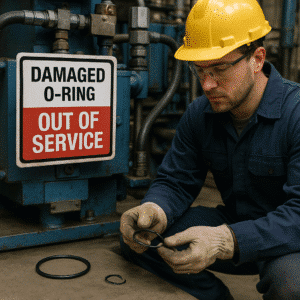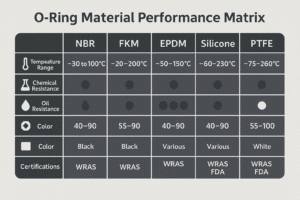Choosing the wrong O-ring material could lead to leaks, downtime, and costly repairs—especially when oil and chemicals are involved.
Viton O-rings outperform nitrile in fuel, heat, and chemical resistance. But nitrile shines in cold, flexible, and cost-sensitive environments. So, when should you upgrade to Viton?
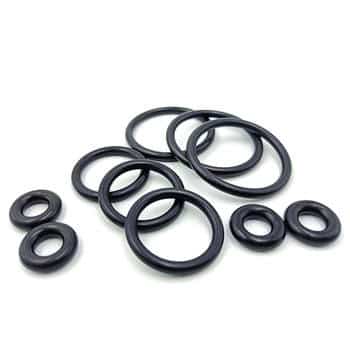
Let’s dive into where each material works best and when paying more for Viton is actually worth it.
When not to use Viton seals?
Viton is great—but not invincible. There are situations where using it can do more harm than good.
Avoid Viton in these cases:
- Very low temperatures (< -20°C) — becomes brittle
- Steam-heavy environments — degraded by hot water and steam
- Budget-sensitive projects — high cost not always justified
- Certain chemicals — ketones, esters, and amines can attack Viton
If you’re unsure which chemical group your fluid belongs to, refer to our FKM chemical compatibility guide.
For everyday sealing in hydraulic systems or pneumatic lines with moderate oil exposure, Δακτύλιοι Ο νιτριλίου may be more cost-effective and flexible.
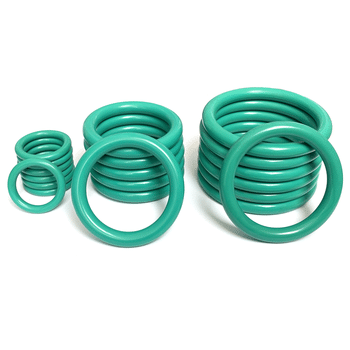
What is the difference between Viton O Ring and Nitrile O Ring?
Here’s a direct comparison to help you decide which O-ring is right for your system:
| Χαρακτηριστικό | Viton (FKM) | Νιτρίλιο (NBR) |
|---|---|---|
| Αντίσταση θερμοκρασίας | Up to 250°C | Έως 120°C |
| Oil/Fuel Resistance | Εξοχος | Καλός |
| Cold Resistance | Fair (-20°C) | Excellent (-40°C) |
| Χημική Αντίσταση | Broad spectrum | Περιωρισμένος |
| Ευκαμψία | Μέτριος | Ψηλά |
| Κόστος | Ψηλά | Χαμηλός |
Viton is the better choice for extreme heat, fuels, and aggressive chemicals. But for general-purpose applications in cold or mild environments, NBR may be the smarter choice.
For an in-depth comparison of materials and real-use cases, check our article:
FKM vs. NBR: Which is Best for Your Application?
Is Viton OK for oil?
Absolutely. One of Viton’s strongest features is its excellent resistance to petroleum-based fluids, including:
- Diesel
- Hydraulic oil
- Transmission fluid
- Jet fuel
- Crude oil
However, it's not compatible with:
- Ketones (e.g. acetone)
- Amines
- Low molecular esters
If you're sealing in high-temperature oil circuits, you’ll benefit from using high-temp Viton O-ring kits specifically designed for thermal resilience.
You can also explore the complete breakdown in our full Viton O-Ring Guide.
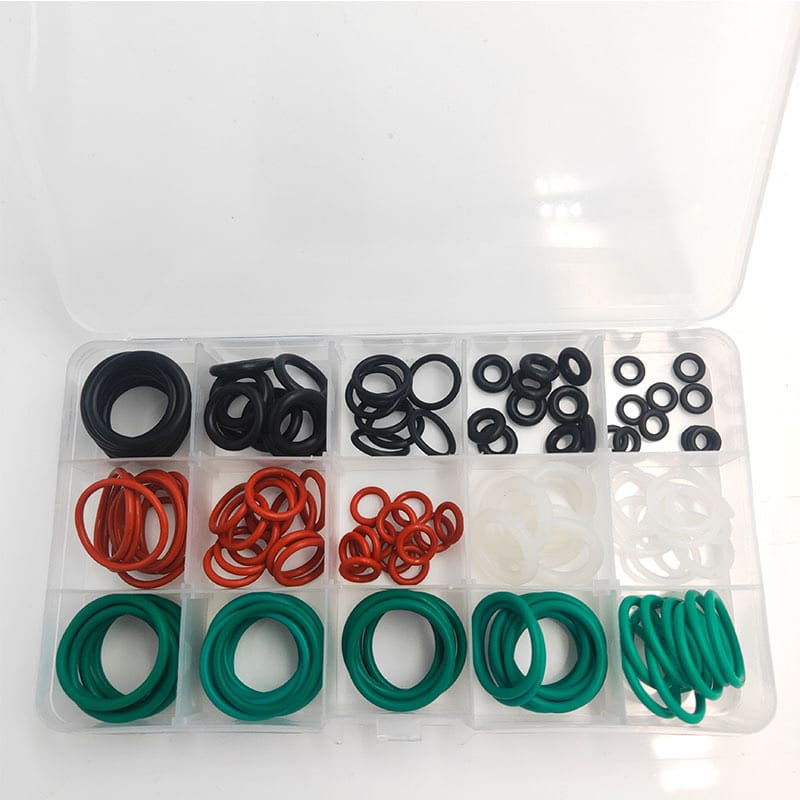
What are the limitations of Viton?
Despite its strengths, Viton has a few key limitations:
- Not steam resistant: Long exposure can degrade performance
- Lower flexibility at cold temperatures
- Ακριβός: Up to 3–5x the cost of NBR
- Not suitable for polar solvents like acetone or MEK
If your application involves intermittent chemical exposure and tight cost controls, consider using a mixed assortment from our O-ring kits to cover both Viton and nitrile needs.
How long do Viton O-rings last?
With proper installation and usage, Viton O-rings can last 5–10 years or more in:
- Fuel systems
- Turbochargers
- Βιομηχανικές αντλίες
- Εξαρτήματα αεροδιαστημικής
The key factors that affect Viton lifespan:
- Θερμοκρασία λειτουργίας
- Fluid compatibility
- Mechanical stress or improper sizing
We helped one European client extend their Viton seal life by 38% simply by correcting installation torque and upgrading to custom FKM formulations.
Σύναψη
Choose Viton when your application demands chemical resistance, high temperature endurance, and oil sealing. Choose NBR when flexibility, cold resistance, and price are more critical.
Related topic
What is Viton O Ring and why does it matter?
Nitrile O-Rings: Are They the Best Oil-Resistant Seals?
Buna vs Nitrile: What's the Difference?
Let's help you make the right material decision
Not sure if your system needs Viton or NBR? Our team helps distributors and engineers every day to match the right material to their performance and budget needs.
📧 [email protected]
📲 WhatsApp: +86 17622979498
Let’s make sealing simple, effective, and stress-free.

